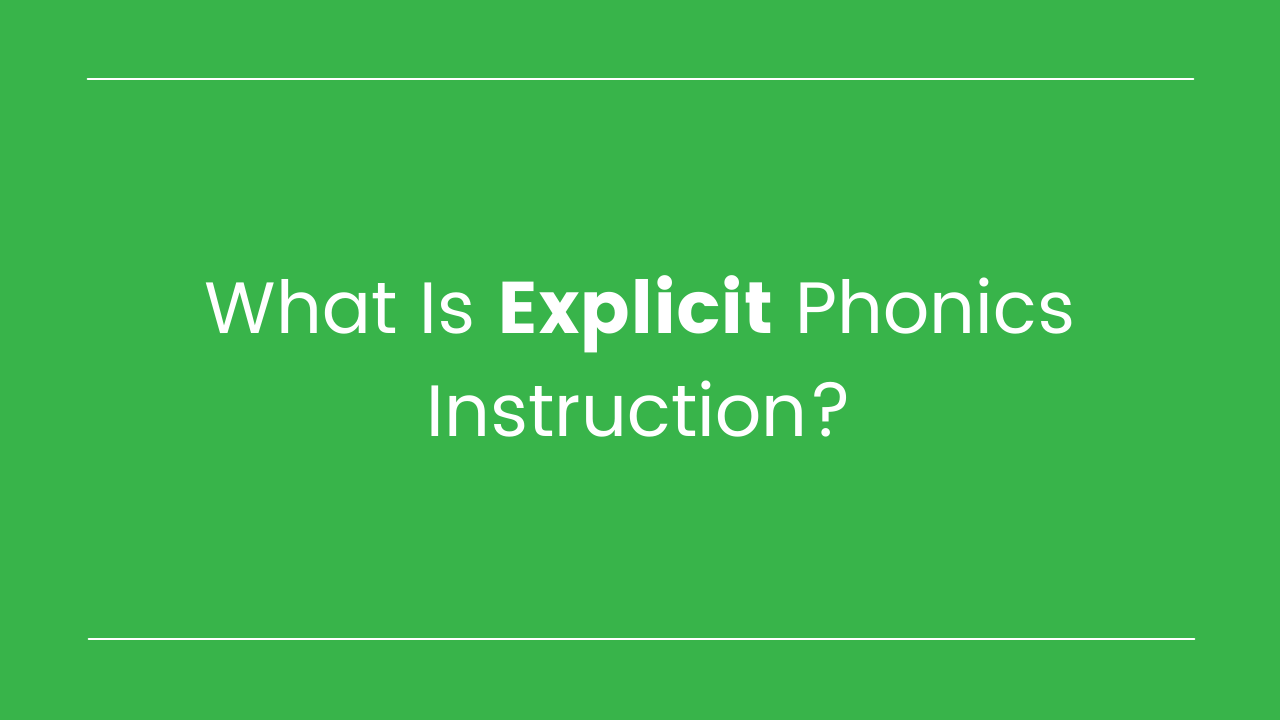
What is Explicit Phonics Instruction?
Research indicates that phonics instruction is most effective in helping students learn reading and spelling skills when the instruction is explicit. Explicit phonics instruction is one of several different types of phonics teaching methods. In this article, we'll explore exactly what explicit phonics instruction is.
First, we'll begin with how children learn to read.
The vast majority of students learn to read by making connections between graphemes and phonemes.
A grapheme is a letter or letter combination that represents a spoken sound (phoneme).
Some examples of graphemes are:
- p
- sh
- ck
- ea
- ou
Some graphemes may represent more than one phoneme (example: the grapheme "s" can represent the /s/ or /z/ sound).
As children learn these connections, they're able to "unlock" (decode) words by using their knowledge.
Explicit phonics instruction involves teaching students the relationships between graphemes and morphemes.
Here's an example: A teacher displays the vowel team "oa" and explains that the two vowels are working together to represent one long vowel sound, the long o. After discussing this with students, the teacher then has them apply this knowledge to read and write words with "oa."
Explicit phonics instruction does not rely on students to independently figure out these grapheme-phoneme connections. In the example above, students wouldn't be asked to read the word "boat" and then try to figure out on their own that the letters "oa" can represent the long o sound. Many students simply will not make these connections on their own, which is why the research supports the explicit phonics instruction method.
Other features of explicit instruction include:
- Breaking down complex skills into smaller tasks (i.e. students learn to read single syllable words with vowel teams before being asked to read multisyllabic words with vowel teams)
- Using modeling and think-alouds during instruction
- Providing corrective feedback to students
- Distributing practice over time and providing opportunities for review
If you're looking for an explicit, systematic phonics program that's easy for teachers to use and fun for K-2 students, check out From Sounds to Spelling and let us know if you have any questions!




